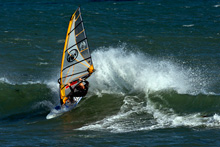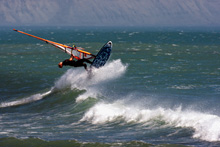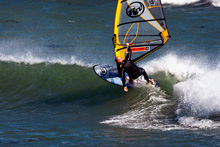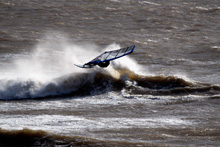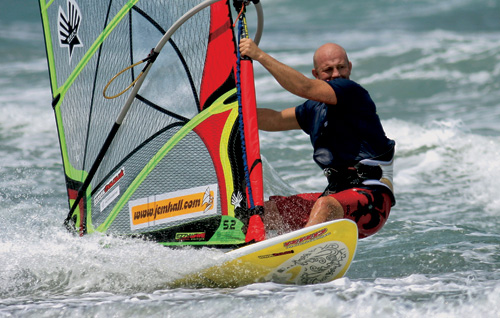
In this instalment of his comprehensive series examining every aspect of wavesailing, Jem Hall looks at tacking and its place in the wave environment…
In a nutshell, if you are a wavesailor, you tack. It’s as simple as that. You are always looking to get upwind – and stay there – as so much of your fun time is spent losing acres of ground downwind. It never ceases to amaze me how many people do not go for or make tacks, but this is about to change as your new wavesailing mindset craves to ‘get the money in the upwind bank.’
The tack is a fundamental move in windsurfing, and even assists intermediates in their quest for the carve gybe, giving them that all-important upwind advantage from where they can bear away and go for gybes. You cannot hide from the fact that, if you tack at both ends in a wave break, you will shorten your reaches by about a third and therefore get more jumps going out and more rides coming in. It’s a win-win situation. The more runs you do through the break the more you’ll get the chance to improve and – most importantly – enjoy the fantastic feeling of big air and sweet rides. So ease up on the ocean grooving and please get tacking.
After my wave coaching clinics clients will go home and invest in a bigger board to nail their tacks, and then look to bring these skills down to the smaller boards. The results year on year are plain to see, and if you see someone nail a good tack in strong winds, bumpy seas and on a small board, well, then you know they are a sound sailor.


